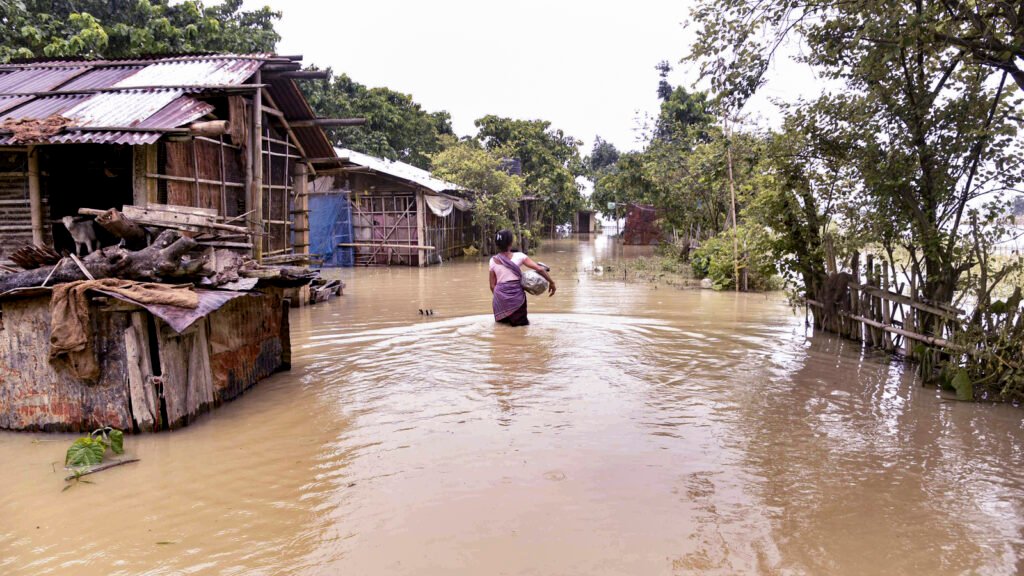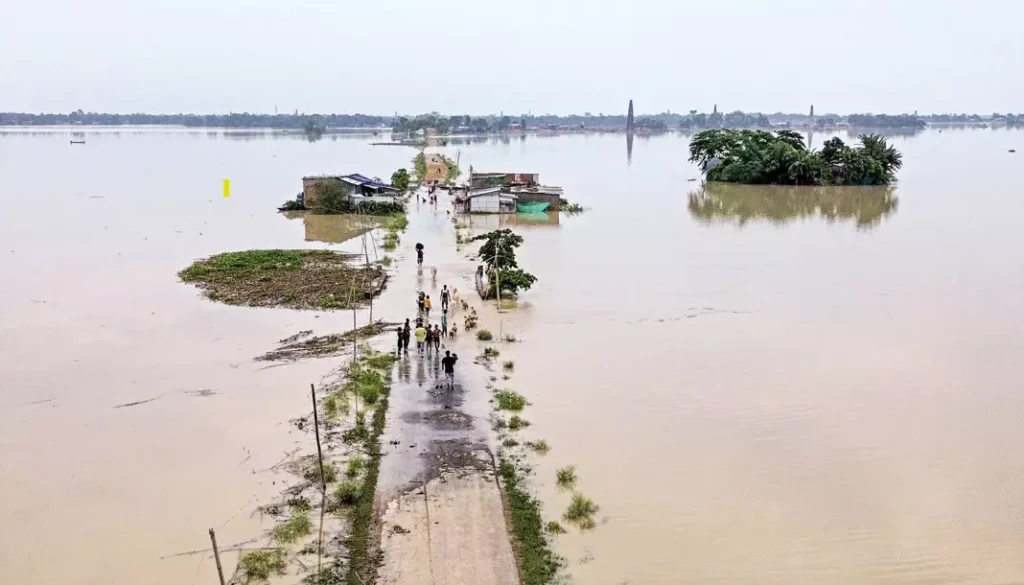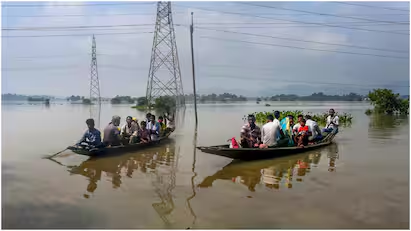Rising waters devastate 16 districts; endangered wildlife at risk as key sanctuary drowns under floodwaters

Assam is again in the grip of a deep flood crisis, with torrential rainwater flooding vast areas of the state. Till June 6, more than 5.6 lakh people have been hit in 16 districts, with the situation worsening daily. The state’s famous Pobitora Wildlife Sanctuary, famous for being home to the one-horned rhinoceros, is one of the worst-hit places—with 70% of the sanctuary going under water due to floods.
The waters have taken 21 lives till now, with two reported on Thursday alone. Almost 1,800 villages are submerged, and thousands of hectares of crops have been washed away, taking a big hit at rural livelihoods. Rescue and relief operations have been stepped up by the State Disaster Response Force (SDRF) and local administration, but the scale of the flooding is proving too much, and it is proving to be a slow and tough process.
In the Morigaon district, which is the home of the Pobitora Wildlife Sanctuary, forest officials have attested that increased water levels have forced rhinos and other wildlife onto elevated grounds. Although the rhinos are safe at the moment, forest guards are on the lookout to avoid accidents of drowning or poaching. Water logging has also hit vital habitats and breeding grounds, threatening long-term conservation plans.

The Brahmaputra River and some of its tributaries are overflowing over danger levels, causing flash floods and erosion in numerous low-lying regions. Other districts also affected by the floods are Barpeta, Nalbari, Lakhimpur, Darrang, and Hojai. Relief camps have been established throughout the state, accommodating thousands of people who lost their homes or were forced to leave them. Agriculture in the region has also been adversely affected by the floods.
Assam Chief Minister Himanta Biswa Sarma has ordered all district officials to be vigilant and provide timely food, safe drinking water, and medical supplies in the affected areas. The Assam State Disaster Management Authority (ASDMA) is keeping a constant watch on the situation and liaising with the Indian Meteorological Department for weather updates to forecast future rainfalls and flood trends.
Environmentalists and wildlife specialists have also expressed fears that the floods can cause ecological devastation, particularly in wildlife reserves such as Pobitora and Kaziranga. Regular inundation of protected zones impacts animal migration trends and enhances the probability of wildlife-vehicle collision as animals migrate to highways and human habitations in quest of dry land.

The state government is also in touch with the central powers, demanding more resources and aid for immediate relief and long-term prevention of floods. While monsoon season only just started, the worry is that conditions could become worse in the next few weeks unless rain patterns stabilize.
Conclusion:
The flood scenario that continues to worsen in Assam is an eye-opener of the vulnerability of the state to monsoon-based disasters. As relief operations are in full swing, the double threat to human life and wildlife calls for improved flood management through sustainable measures, early warning systems, and conservation-based disaster planning. While more than half a million people are impacted and one of India’s most biodiverse regions under threat, Assam is battling on many fronts.

